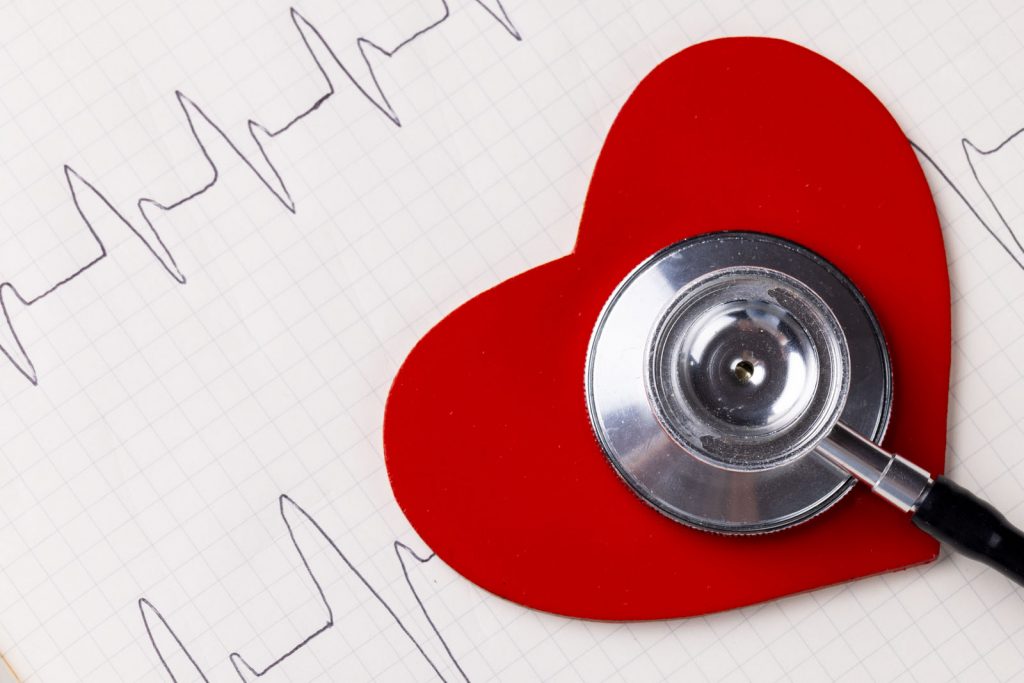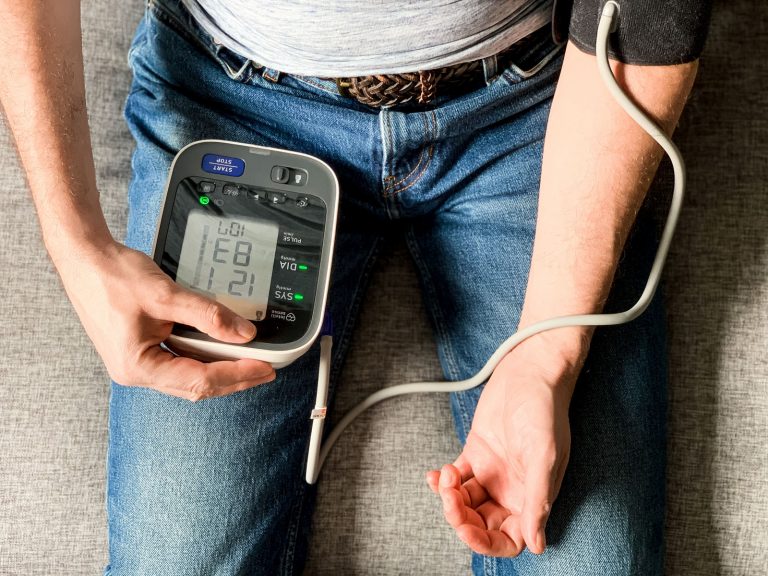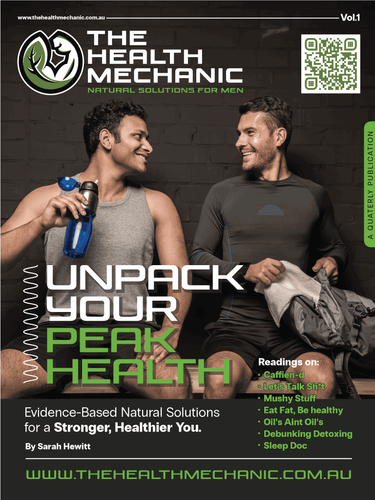Understand why your cholesterol is high and get expert advice on improving your heart health. Explore our blog for more information.
Understanding Dyslipidaemia: Why Is My Cholesterol High?
Key Takeaways
- Cholesterol is essential- Cholesterol plays a vital role in cell membranes, hormone production, bile acid formation, vitamin D synthesis, and nerve function.
- Types of lipid disorders- Hypertriglyceridemia, hyperlipidemia, and hypercholesterolemia each have different implications and treatments.
- Genetics vs. lifestyle factors- Dyslipidemia can be genetic (familial hypercholesterolemia) or influenced by diet, alcohol intake, and physical activity.
- Advanced lipid testing- Advanced testing including LDL particle number, LDL particle size, lipoprotein(a), and homocysteine levels provide more accurate cardiovascular risk assessments than basic lipid panels.
- Integrative approach- Functional medicine and natural interventions, including dietary modifications and lifestyle changes, offer targeted, preventive strategies.
Introduction
Despite it having become a “dirty” word, cholesterol plays a major role in our body. It helps build cell membranes and make sex hormones. Cholesterol helps produce vitamin D, and is also a component of bile acids which are needed to digest fats. In addition to that, cholesterol is essential for protecting our nerves and preventing neuronal degeneration (dementia). However, having too much or too little can cause health problems, such as heart and peripheral artery disease.
We commonly speak of “high cholesterol” but there is a lot more to it than that. There are many types of lipid imbalances or dyslipidaemia, with a variety of causes- and they all require different management. Instead of assuming “high cholesterol” is the same in all men, It’s essential to investigate thoroughly in order to understand what causes the imbalance in each individual patient in order to get the best results.
Lipid Testing In Australia
A regular lipid panel in Australia usually tests for total cholesterol, high-density lipoprotein (HDL- known as good) cholesterol, low-density lipoprotein (LDL- often referred to as bad) cholesterol, and triglycerides. As you know, these tests are used to help us assess and reduce a persons risk of heart disease.
Different Types of Lipid Conditions
63% of Aussie adults have dyslipidaemia. And you’ve been told your cholesterol is high- but what does that actually mean? As the introduction mentioned, its more complicated than that. Hypertriglyceridaemia, hyperlipidaemia, and hypercholesterolaemia are different types of lipid disorders. Hypertriglyceridaemia means that triglyceride levels are high. Hyperlipidaemia means there is high total cholesterol. This is a general term for elevated lipids in the body. Hypercholesterolaemia refers only to elevated LDL levels. It is important to understand these differences for the right diagnosis and treatment.
The causes of elevated lipids can be different for each person too- either primary (genetic) or secondary (environmental or lifestyle).
Unfortunately, our medical system is not set up to offer us the preventative time and care we really need. Working with a functional medicine practitioner or naturopath who understands the differences in these conditions allows better detection and management of lipid imbalances. Identifying issues early and providing health information and education can have a big effect on long-term heart health and overall well-being.
The Significance of Lipid Ratios and Patterns
Functional medicine practitioners read pathology results differently to most doctors. The single numbers don’t tell us the whole story. Cholesterol ratios and patterns also need to be considered when assessing the risk of heart disease. It’s not just about individual lipid value. By looking at ratios, like total cholesterol to HDL or triglycerides to levels of HDL, we can see a clearer picture of heart health and cardiovascular disease risk. These ratios show the balance between “good” and “bad” cholesterol. They help us determine where the problem lies for more effective management and health benefits.
Causes of Elevated Lipids in Australian Men
Heart disease makes up approximately 30% of all deaths in Australia, highlighting the importance of taking control of our health! 8.3% of Australian men suffered from high cholesterol in 2022– so it’s a significant mens health issue that needs support.
Primary vs. Secondary Causes of Dyslipidaemia or Hyperlipidaemia
Dyslipidaemia can have two main causes. The first is primary dyslipidaemia, which is often linked to genetics. Familial hypercholesterolaemia is a genetic condition that can raise lipid levels. This means that people may have inherited traits that affect how their body handles types of fat, resulting in high lipid levels (no matter how well they eat, or how hard they train). People with a family history of high cholesterol are at greater risk of high ldl. Approximately 1 in 250 Australians are affected by familial hypercholesterolaemia. This mutation in the low density lipoprotein (LDL) receptor gene is around 1:500 in the general population, but higher in some ethinic groups including Ashkenazi Jews.
Then there are secondary causes, which come from outside factors. These include bad habits, like eating a lot of processed foods and insufficient fibre, obesity, drinking too much alcohol, and not getting enough physical activity, or specific medical conditions that affect how the body controls lipids. Secondary dyslipidaemia is more common than familial hypercholesterolaemia in Australia and is reversible or modifiable by addressing the underlying causes.
Despite it often being used as an excuse for poor cholesterol readings, genetics is not the primary cause of high lipids. By making changes, such as reducing high blood pressure, choosing a healthy diet and getting regular exercise, we can often prevent and reduce lipid dysregulation naturally.
How Can I Reduce Cholesterol Naturally: Diet & Lifestyle

Ok, so a good diet with unsaturated fats can increase HDL levels and lower bad cholesterol. We’ve all heard that before. It is common knowledge that saturated fats can raise cholesterol levels in some people, but it’s important to realise that this is only one factor against many, and not everyone responds the saturated fat in the same way. Those with familial hypercholesterolaemia may need to limit foods that have a lot of cholesterol, like red meat and full-fat dairy products, to help manage blood cholesterol levels, but there are other important aspects of fats that are often not discussed.
Trans fats, commonly found in processed and fried foods, are particularly dangerous for heart health as they raise LDL and lower HDL. Beyond altering cholesterol levels, trans fats can oxidise in the bloodstream, leading to the formation of plaques within the arteries- a process known as atherosclerosis. Atherosclerosis starts in childhood and adolescence– no, the skinny kids can not “get away” with eating processed crap! This atherosclerotic plaque build-up narrows the arteries and restricts blood flow, significantly heightening the risk of heart attacks and other cardiovascular events.
Industrially produced trans fat can be found in margarine, vegetable shortening, fried foods, and baked goods such as biscuits and pies. The World Health Organisation recommends adults limit consumption of trans fat to less than 1% of total energy intake, which is less than 2.2 g per day for a 2000-calorie diet. Despite their harmful effects, trans fats are often overlooked in conventional medicine, and testing for trans fat levels is not routinely performed. This is a critical gap in the prevention and management of heart disease.
I routinely test for trans-fat levels in all my patients as a preventative measure. It shows me the quality of a person’s diet, and can also be used to measure improvement and decreased risk of disease.
Beyond Conventional Testing: Advanced Diagnostics
Other advanced tests like LDL-particle number and LDL-particle size give better insights into dyslipidaemia than regular lipid panel tests. Although they are not commonly done, these tests help us understand lipid makeup in detail.
Understanding LDA-p and LDA-p Size
Testing for LDL-particle (LDL-P) count and LDL-particle size provides a deeper insight into cardiovascular risk than traditional cholesterol testing alone. While LDL testing measures the amount of cholesterol carried by low-density lipoproteins, LDL-P testing quantifies the actual number of LDL particles in the blood. High LDL-P levels can indicate a greater number of particles, which increases the likelihood of these particles penetrating artery walls and forming plaques. Additionally, smaller LDL particles are more prone to oxidation and can more easily infiltrate the arterial lining, leading to atherosclerosis.
Research shows that LDL-P is more sensitive indicator of cardiovascular risk than either LDL-cholesterol or non-HDL cholesterol.
Assessing both LDL-P count and particle size can be valuable, as it provides a more comprehensive understanding of cardiovascular risk, particularly in individuals who may have normal LDL cholesterol levels but still be at high risk for heart disease. This information is important for assessing risks and creating specific treatment plans.

Why Is My Cholesterol Not Going Down? Introducing Lipoprotein(a)
Testing for lipoprotein(a), or Lp(a), measures the levels of a specific type of lipoprotein in the blood that is genetically determined and independent of traditional cholesterol levels. Screening patients for elevated Lp(a) levels helps us identify those who need more aggressive cardiovascular disease risk management. Elevated Lp(a) is associated with an increased risk of atherosclerosis, heart attacks, and strokes, as Lp(a) can promote blood clot formation and plaque buildup in the arteries.
Unlike LDL, Lp(a) levels do not typically respond to lifestyle changes or conventional lipid-lowering therapies, making its measurement particularly important for identifying individuals at elevated cardiovascular risk who may not yet show abnormalities in other lipid tests. We’ve all known that person who was “perfectly healthy”, who had an unforeseen heart attack. Studies show that high levels of [Lp(a) is a risk factor for cardiovascular disease that can increase the risk of developing cardiovascular disease, even when LDL cholesterol (LDL-C) levels are within the recommended range.
Therefore, I consider testing for Lp(a) valuable, as it provides additional insight into a person’s unique risk profile- particularly for those with a family history of cardiovascular disease or unexplained heart conditions.

What Does High Homocysteine Mean?
Another test I routinely do is homocysteine. Testing for homocysteine levels in the blood can reveal important information about cardiovascular health. Studies show elevated homocysteine is associated with an increased risk of heart disease, stroke, and blood clots. High homocysteine levels can damage the lining of the arteries, promote inflammation, and encourage the formation of plaques.
Homocysteine levels are influenced by genetic factors and deficiencies in certain B vitamins, making it a marker for both nutritional status and cardiovascular risk. Measuring homocysteine can be as valuable as traditional lipid tests because it provides additional insight into vascular health, and helps identify individuals who might benefit from targeted nutritional interventions.
Why Certain Lipid Tests Are Not Routinely Conducted
Some lipid tests are not done regularly because they can be costly and complex. Advanced tests, like Lp(a), give detailed information but are not covered by Medicare. Many doctors consider this unnecessary for initial checks. Also, understanding these tests needs special knowledge, making it hard to use them in regular lipid panels. Doctors usually use these advanced tests only if standard lipid panel results are unclear or if they need specific details for tailored treatment plans.
How Can I Reduce My Cholesterol Naturally?
By thoroughly investigating your specific lipid profiles, we can get to the root cause of your cholesterol imbalance and design an individualised program to achieve better results. Changes in lifestyle and diet must be tailored to fit each patient’s results and lifestyle. Most people require nutritional coaching and ongoing support to ensure the changes are made in a way that are sustainable for reduced heart disease risk.

The Role of CoQ10 for Patients on Statins
An example of something I might prescribe to my cardiovascular patients is CoQ10. Coenzyme Q10, or CoQ10, is very important for making energy in our cells and for protecting against damage. Statins reduce the bodies own production of this antioxidant, and these medications lead to lower levels of CoQ10- which unfortunately is great for heart health! Taking CoQ10 can help lessen muscle pain and weakness, which are common symptoms in those using statins.
Studies show CoQ10 also improves myocardial function. Therefore, it is vital to think about CoQ10 when using statins.
The Role of Physical Activity in Managing Cholesterol
Making changes in our lifestyle is key to lowering the risk of high cholesterol and heart problems. Regular aerobic exercise helps reduce triglyceride levels and the risk of heart disease. Exercise helps keep blood pressure at a healthy level and supports overall heart health. It’s important to make sure you get enough exercise to reduce fatty deposits building up in your blood vessels. Limiting how much alcohol you drink and eating whole grains and fruits can also help improve cholesterol levels.
Pharmaceuticals for Lipid Management
Medications can help manage cholesterol levels, and they are prescribed depending on the specific lipid problem.
For hyperlipidemia, doctors usually prescribe statins, fibrates, or niacin to lower LDL cholesterol and triglyceride levels. On the other hand, hypercholesterolemia mainly uses statins to cut down LDL cholesterol. The choice of medicine depends on the goals for lipid levels and what each patient needs. Medications for hyperlipidemia help manage overall lipid balance, while those for hypercholesterolemia focus on lowering high cholesterol levels. Treatment plans are made based on the specific lipid issue and the outcomes the doctors want to achieve.
Herbs and nutrients can be used alongside these medicines to support their actions and prevent the progression of disease. Please consult a qualified natural health practitioner, rather than just self-prescribing supplements that might not be effective for you, or could have interactions with medications or other health conditions.
Conclusion
In conclusion, it is important to understand why cholesterol can be high. Knowing how lifestyle choices, genetics, and eating habits affect cholesterol levels helps people take charge of their heart health. Regular blood tests and lipid panels are key to keeping track of cholesterol levels and understanding the risk of heart disease. Eating a balanced diet, staying active, and using advanced tests when needed can greatly lower the risks of having high cholesterol in many situations- but in others, more specialised treatment may be required. Working with a naturopath or nutritionist can help you to cut through the nonsense in order to lower cholesterol levels quickly.
Frequently Asked Questions
What is the main cause of high cholesterol?
High cholesterol can be caused by several things. This includes eating unhealthy foods, not exercising, being overweight, smoking, and your genes. On the other hand, unsaturated fats in foods like olive oil and avocados can raise good cholesterol levels.
Why is my cholesterol high even though I live a healthy lifestyle?
High cholesterol can happen even if you live a healthy life. This can be due to your genetics, certain medical conditions, and in some cases by the food you eat. It is important to understand these factors in order to manage it effectively.
Can natural remedies help reduce high cholesterol levels?
Natural products including garlic, flaxseed, and green tea may all help reduce high cholesterol levels, and can work alongside pharmaceutical treatments and dietary changes. However, remember to tell your doctor about any supplements you may be taking.












